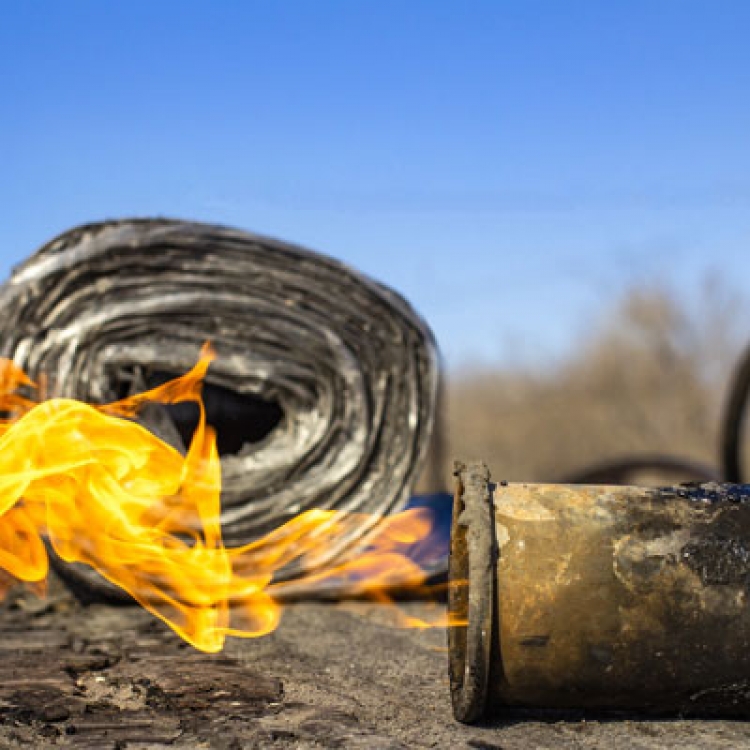Hot work safety under the spotlight

Notre Dame is a stark reminder that construction site fires are on the rise. Deon Webber, of IFIC Forensics, explains the importance of hot work safety best practice.
Construction site fires, including those occurring during refurbishments and renovation work, were hitting the headlines even before the destruction of large parts of the roof by a catastrophic fire at Notre Dame Cathedral in Paris in April.
Data sourced from the Home Office revealed that the total number of construction site fires has been on an upwards trajectory for the four years up to 2017, with intentionally caused fires up by 43% between 2015 and 2017. In parallel, the cost of fire and explosion claims for commercial property insurers grew to £945m in 2017, according to the Association for British Insurers.
The presence of scaffolding around sections of the Notre Dame roof shows that some form of construction work was underway at the time. The cause of the fire is still under investigation, but preliminary comment suggests that an electrical event, linked with £5 million renovation project is being considered as a possible cause. It is already reported that compartmentation and a lack of sprinklers in the roof space may have assisted the spread.
Heritage buildings carry their own specific risks leaving them susceptible to a higher risk from fire. This can relate to the original construction methods and materials used, the presence of hidden voids in walls that can assist spread, a lack of fire detection or sprinklers and the presence of tourist visitors that maybe from parts of the world where there is a different attitude to things like smoking in public places. It is clear, however, that these buildings are at the highest risk when alterations, repairs or renovations are taking place.
Hot works: best practice
The importance of effective fire risk management on construction sites cannot be overplayed and of particular interest to the insurance industry is the problem of hot work fires. At the time of writing there is no information as to what type of work was being carried out at Notre Dame.
Hot work refers to methods of work, primarily in construction and refurbishment, which produce heat in the form of flame, hot surfaces or sparks. Sources of heat commonly involved in hot work processes include: gas/electric welding and cutting apparatus; blowlamps/blowtorches; grinding wheels and cutting discs; brazing and soldering.
Guidance documents produced by insurers, industry groups and government bodies relating to hot work safety detail relatively similar procedures which represent good practice in hot work. Most policy conditions are based on this guidance and failure to comply will in most cases invalidate policy cover. These documents are important as risk mitigation tools and can also form the basis of a third-party recovery or a repudiation in the event of a claim.
Fire risk assessments and the instigation of a 'permit to work scheme' are vital when hot work is being undertaken. These are the responsibility of the 'responsible person' at the premises. Permits to work result from a fire risk assessment and are used to supervise the contractor and control the risks. A hot work permit should be produced for every period of work. They last a maximum of one day, cover only the area detailed in the permit and should be signed at the start of the task and at the conclusion of the task by those completing the work and those authorising the work.
Such precautions are always important but increasingly more so on older, heritage buildings, where architects' plans may not exist to show what lies behind walls and under floors.
On-site safety discipline
Fires occurring where the correct level of control is applied and permit to work schemes are operating properly are rare. Monitoring of sites can however assist in mitigating the risk of hot work claims. Periodic and unannounced visits to contractors on site will provide evidence of whether guidance is being followed and help to embed the discipline required.
The Regulatory Reform (Fire Safety) Order 2005 sets out the law on construction site general fire safety, including means of escape. The CDM Regulations 2015 also impose duties including the requirement to prevent risk from fire. The fire risk from site activities must be regularly assessed and precautions taken to control the quantity and safe storage of combustible materials on site and action taken to eliminate reduce and control ignition sources on site.
Utimately, where the potential risks posed by hot work are too great, such as on irreplaceable heritage buildings, alternative working methods should be adopted that do not involve the production of heat or sparks.
It is within the gift of the risk management community to work to reduce the number of fires on construction sites and buildings undergoing refurbishment through careful risk planning and controls. Where such building work affects heritage buildings, risk managers should consider more detailed and more frequent monitoring of the precautions in place.

Deon Webber is senior investigator at IFIC Forensics. This article was first published in March and has been updated and republished to account for the Notre Dame fire that occurred in April.
